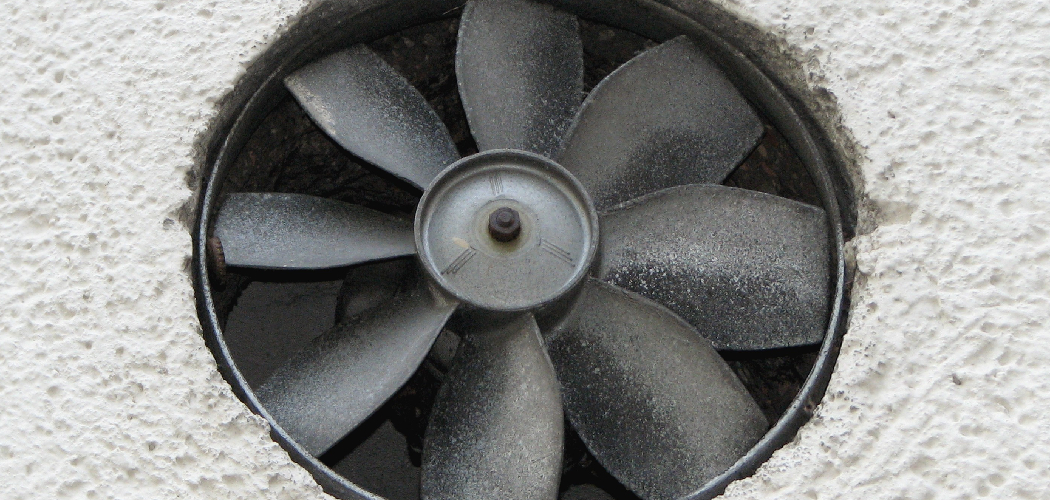Determining whether your bathroom fan is functioning properly is crucial for maintaining a healthy and comfortable environment in your home. A functioning bathroom fan helps to remove excess moisture, odors, and pollutants from the air, reducing the risk of mold growth, humidity-related damage, and unpleasant smells.
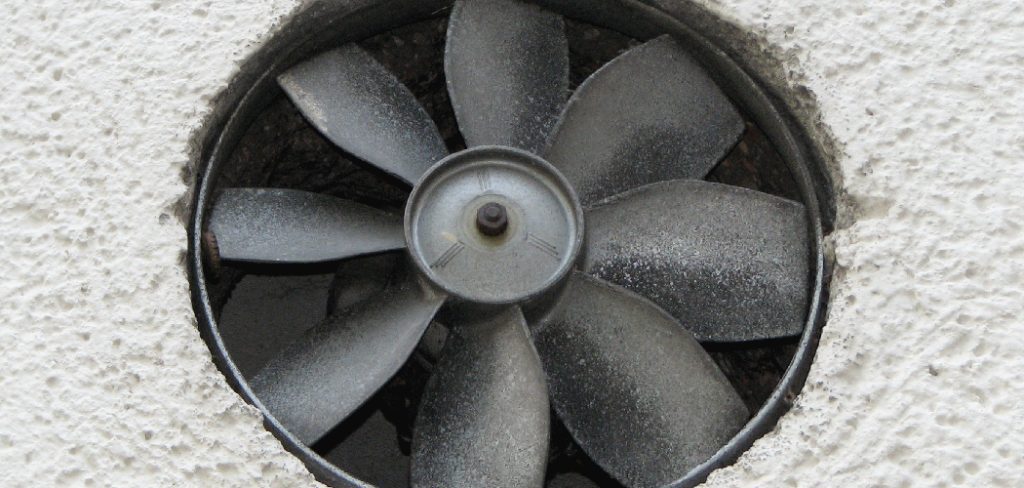
However, it can sometimes be challenging to tell if a bathroom fan is working effectively, especially if it operates quietly or if there are no obvious signs of malfunction. In this article, we’ll explore several methods to help you determine whether your bathroom fan is working as it should, from simple visual and auditory checks to more comprehensive assessments of airflow and ventilation performance. By learning how to tell if bathroom fan is working, you can ensure optimal air quality and comfort in your bathroom space.
Importance of Bathroom Ventilation
Proper bathroom ventilation is essential for maintaining the health and longevity of your home. It serves a critical role in removing stale air filled with moisture, odors, and pollutants, and replacing it with fresh, clean air. Without adequate ventilation, your bathroom becomes a breeding ground for mold and mildew, which can cause significant damage to walls, ceilings, and fixtures over time.
High humidity levels can also lead to the warping of wooden structures and the peeling of paint and wallpaper. Beyond the structural implications, poor ventilation compromises indoor air quality, potentially leading to health issues for the occupants. Therefore, ensuring that your bathroom fan is working efficiently is not just about comfort but about protecting both your health and your investment in your home.
Purpose of Bathroom Fans
The primary purpose of bathroom fans is to expel moist and stale air from the bathroom environment to the outdoors, thereby preventing the accumulation of humidity and reducing the levels of indoor pollutants. Moist air, if left unchecked, can condense on surfaces, leading to the growth of mold, mildew, and bacteria.
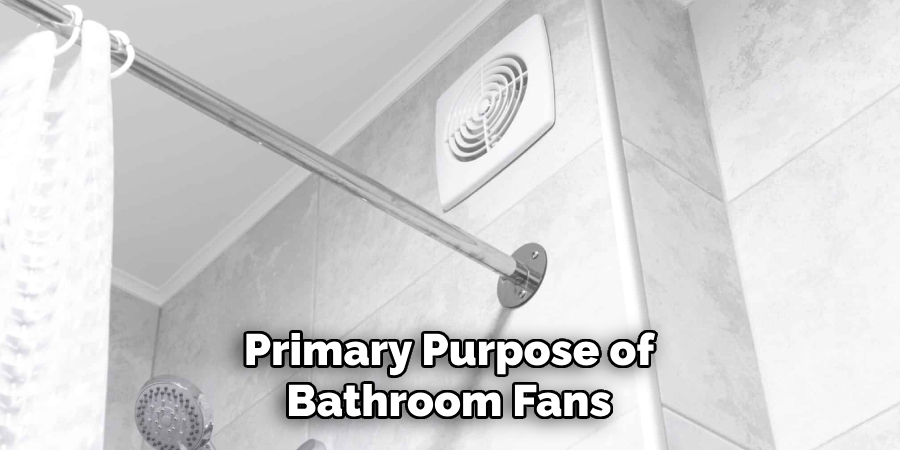
These microorganisms not only damage the bathroom’s physical structure but can also pose health risks to inhabitants by reducing air quality and potentially causing respiratory issues and allergic reactions. Bathroom fans play a critical role in maintaining a dry and healthy environment by ensuring continuous air circulation.
This ventilation process also aids in eliminating unpleasant odors, thus maintaining a fresh and clean atmosphere in the bathroom. In essence, bathroom fans are essential for promoting the health, safety, and comfort of home environments by addressing issues of moisture, air quality, and odors.
Significance of Ensuring Proper Functionality
Ensuring that your bathroom fan is functioning properly is not merely a matter of convenience but a critical investment in your home’s overall well-being. A well-operating bathroom fan significantly contributes to preventing the detrimental effects of excess humidity and moisture.
When left unaddressed, these elements can lead to the growth of mold and mildew, which pose serious health risks and can result in costly damages to your home’s structure and aesthetics. Proper functionality of your bathroom fan also means maintaining optimal air quality, which is essential for the health of all inhabitants. Air that is free from excessive moisture and airborne pollutants contributes to a healthier living environment, reducing the risk of respiratory problems and enhancing the comfort of your home.
Types of Bathroom Fans
When it comes to selecting a bathroom fan, it’s important to understand that there are several types available, each designed to cater to different bathroom sizes, setups, and specific needs. Here are the most common types of bathroom fans:
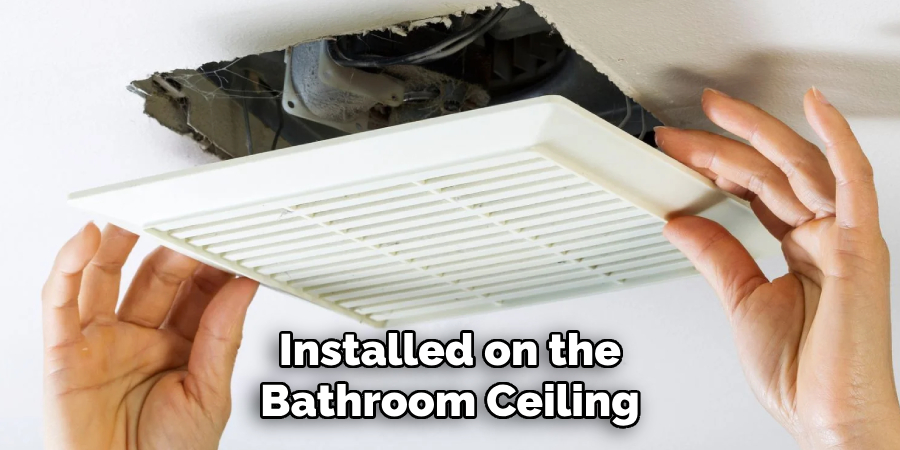
- Ceiling-Mounted Fans: These are the most popular type of bathroom fans. Installed on the bathroom ceiling, they extract moist air upwards and expel it outside through ducts. They are effective in most standard bathroom layouts.
- Wall-Mounted Fans: Ideal for bathrooms without attic access, wall-mounted fans are installed on the exterior wall of a bathroom. They work similarly to ceiling-mounted fans but expel the air directly outside without the need for extensive ductwork.
- Inline Fans: Inline fans are installed in the ductwork, usually in the attic or between ceiling joists. They are powerful and can service multiple bathrooms or a large single bathroom efficiently. Due to their remote installation, they also tend to operate more quietly.
- Combination Units: These units serve dual purposes and are equipped with additional features such as lights, heaters, or humidity sensors. They are ideal for buyers looking for multifunctional bathroom solutions.
- Energy Star Rated Fans: These fans are designed to provide optimal efficiency and low energy consumption. While not a separate category in terms of installation, their high-efficiency design makes them worth mentioning for homeowners looking to reduce their carbon footprint and energy bills.
Signs of a Malfunctioning Bathroom Fan
A fully functional bathroom fan is crucial for maintaining the air quality and structural integrity of your bathroom. Recognizing the signs of a malfunctioning bathroom fan can help you address issues promptly, avoiding more significant problems down the line. Here are key indicators that your bathroom fan may not be working correctly:

- Ineffective Moisture Removal: If you notice that moisture is lingering longer than usual on surfaces such as mirrors, walls, and windows after a shower, it could indicate decreased fan efficiency.
- Unusual Noises: Rattling, buzzing, or other strange sounds emanating from the fan are common symptoms of a malfunction. These noises may suggest that the fan is obstructed, parts are loose, or the motor is failing.
- Visible Mold and Mildew Growth: An increase in mold and mildew spots, particularly on the ceiling or in corners of the bathroom, is a clear sign that the fan isn’t adequately removing humid air.
- Odors: If unpleasant odors persist in the bathroom or if it smells musty, this could signal inadequate ventilation, suggesting that the fan isn’t effectively expelling stale air and moisture.
- Fan Doesn’t Turn On: The most obvious sign of a problem is when the bathroom fan doesn’t activate at all. This could be due to electrical issues, a tripped circuit breaker, or a burnt-out motor.
Acting swiftly upon noticing these signs can prevent further damage and ensure that your bathroom remains a healthy, comfortable space. Regular cleaning and maintenance can extend the life of your fan, but if these signs persist, consulting with a professional for repair or replacement is advisable.
Lack of Proper Ventilation
The absence of proper ventilation in a bathroom can lead to several undesirable consequences that can compromise the structure of the home and the health of its inhabitants.

Without adequate air circulation facilitated by a functional bathroom fan, moisture levels can remain high, setting the ideal stage for the proliferation of mold and mildew. These fungi not only damage the bathroom’s surfaces and fixtures but also pose serious health risks, especially to those with allergies or respiratory issues.
Additionally, the lack of proper ventilation can cause lingering odors, making the bathroom environment unpleasant. Over time, excessive moisture can penetrate walls and ceilings, leading to costly structural damage, including peeling paint, warped doors, and deteriorated flooring.
Furthermore, high humidity levels can attract pests such as termites and roaches, which thrive in damp conditions. Therefore, ensuring that your bathroom has effective ventilation is crucial for maintaining a healthy, comfortable, and damage-free home environment.
Persistent Moisture Build-Up
One of the critical challenges faced in bathrooms without adequate ventilation is persistent moisture build-up. This problem manifests in various forms, impacting not only the bathroom’s aesthetics but also its functionality and the overall health of the household. When moisture remains trapped in a bathroom due to inadequate ventilation, it leads to a host of issues.
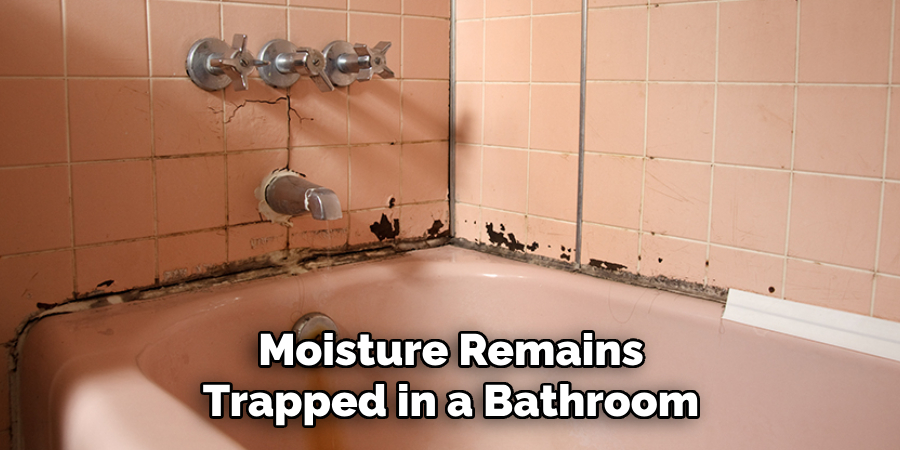
Firstly, constant moisture on surfaces creates a slippery and potentially dangerous environment. Tiles, when wet, can lead to slips and falls, posing a risk of injury to users. Secondly, a damp environment contributes to the deterioration of bathroom fixtures and fittings. Metal components, such as taps, showerheads, and even pipework, are especially susceptible to corrosion, while wooden elements can swell, warp, or rot over time due to excessive moisture exposure.
In addition to the physical damage, the high humidity fosters an environment conducive to dust mites, a common allergen affecting many people. The presence of dust mites in conjunction with mold spores significantly increases the risk of respiratory problems, allergic reactions, and exacerbations of asthma for the inhabitants.
10 Methods How to Tell if Bathroom Fan Is Working
1. Visual Inspection:
Start by visually inspecting the bathroom fan. Check for any visible signs of damage, such as broken blades, loose screws, or excessive dirt and debris buildup. If you notice any damage or obstruction, it may indicate that the fan is not working correctly and requires maintenance or replacement.
2. Listen for Noise:
Turn on the bathroom fan and listen for any unusual noises, such as rattling, grinding, or squeaking. A properly functioning fan should operate quietly, so any unusual sounds may indicate a problem with the motor, blades, or bearings. If you hear unusual noises, it’s a sign that the fan may need to be repaired or replaced.

3. Feel for Airflow:
Place your hand near the fan grille while it’s running to feel for airflow. A properly functioning bathroom fan should produce a steady stream of air flowing out of the grille. If you don’t feel any airflow or if the airflow is weak, it may indicate that the fan is not working correctly and needs to be inspected further.
4. Check the Grille:
Remove the fan grille cover and inspect the fan blades for any signs of damage or obstruction. Clean the blades with a damp cloth to remove any dust or debris buildup that may be affecting airflow. Also, check the grille itself for any blockages or buildup that may be restricting airflow.
5. Test the Switch:
Test the fan switch to ensure that it is functioning properly. Turn the switch on and off several times to see if the fan starts and stops as expected. If the fan does not respond to the switch or if the switch feels loose or sticky, it may indicate a problem with the electrical connection or the switch itself.
6. Check for Moisture:
Excess moisture in the bathroom can lead to mold and mildew growth, so it’s essential to ensure that the fan is effectively removing moisture from the air. After taking a shower or running hot water in the sink, check for condensation on the walls, ceiling, and mirror. If you notice excessive moisture or fogging, it may indicate that the fan is not adequately ventilating the space.
7. Inspect the Ductwork:
Inspect the ductwork connected to the bathroom fan for any signs of damage, such as cracks, leaks, or disconnected sections. Also, check for any obstructions, such as debris or pests, that may be blocking airflow through the ducts. Proper airflow through the ductwork is essential for the fan to effectively remove moisture and odors from the bathroom.
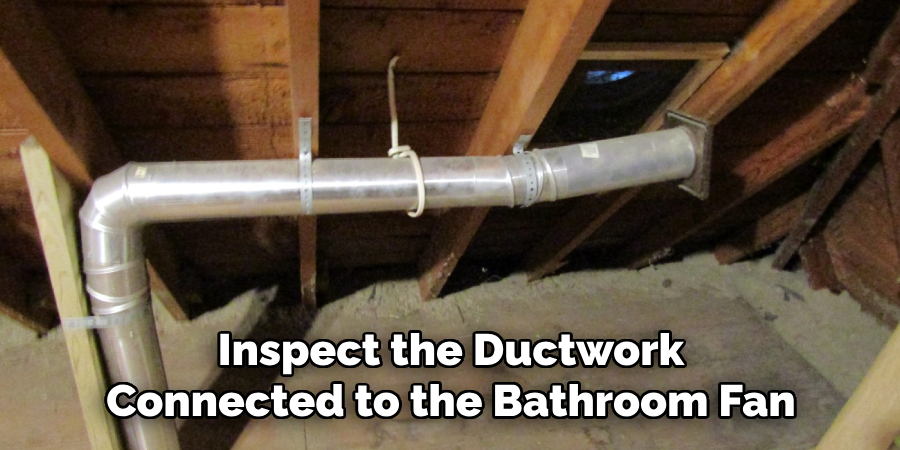
8. Use a Smoke Test:
Perform a smoke test to visually assess airflow from the fan. Hold a lit incense stick or a piece of tissue paper near the fan grille while it’s running. If the smoke or paper is drawn towards the grille, it indicates that the fan is working correctly and effectively drawing air out of the bathroom. If there is no movement or if the smoke is blown away from the grille, it may indicate a problem with the fan’s airflow.
9. Monitor the Humidity Level:
Use a hygrometer to monitor the humidity level in the bathroom while the fan is running. Ideally, the humidity level should be below 60% to prevent mold and mildew growth. If the humidity level remains high even with the fan running, it may indicate that the fan is not adequately ventilating the space and needs to be inspected further.
10. Consult a Professional:
If you’ve tried the above methods and are still unsure whether your bathroom fan is working correctly, it may be time to consult a professional. A licensed electrician or HVAC technician can perform a thorough inspection of the fan and ductwork, diagnose any issues, and recommend appropriate repairs or replacements. They have the knowledge and expertise to identify and address problems with your bathroom ventilation system effectively.
Troubleshooting Common Issues
When encountering problems with your bathroom fan, there are several common issues that you might face. Identifying and addressing these issues can restore your bathroom fan to optimal functionality. Here are some common problems and their potential fixes:
1. Fan Doesn’t Turn On
- Check the Circuit Breaker: A tripped circuit breaker could prevent the fan from receiving power. Reset the breaker and try turning the fan on again.
- Inspect Wiring Connections: Loose or disconnected wiring can also lead to power issues. Ensure all connections are secure, but always turn off the power at the circuit breaker before inspecting wiring.
2. Weak Airflow
- Clean the Fan: A buildup of dust and debris on the fan blades can reduce airflow. Cleaning the fan blades and grille can often improve performance.
- Inspect for Duct Blockages: Check the ductwork for obstructions that could be restricting airflow, such as bird nests or accumulated debris.
3. Unusual Noises
- Tighten Loose Parts: Rattling or vibration sounds are frequently caused by loose parts. Tighten any screws or components that seem loose.
- Lubricate the Fan Motor: A squeaking or grinding noise might indicate that the fan motor needs lubrication. Use a light oil on the motor’s bearings according to the manufacturer’s instructions.
4. Moisture-Related Issues
- Ensure Proper Duct Length and Installation: Long or improperly installed ductwork can hinder moisture expulsion, leading to condensation. Ensure the ductwork is as short and straight as possible and slopes downward toward the outside vent.
- Upgrade the Fan: If your current fan isn’t powerful enough to handle the bathroom’s size and humidity level, consider replacing it with a model with a higher CFM (cubic feet per minute) rating.
5. Automatic Features Not Working
- Check Sensors and Timers: Some fans come equipped with humidity sensors or timers that automatically control operation. If these aren’t working, ensure they’re properly connected and programmed according to the manufacturer’s instructions.
By systematically working through these troubleshooting steps, you can identify and solve many common bathroom fan issues, improving the air quality and reducing moisture in your bathroom.
Conclusion
In conclusion, ensuring that your bathroom fan is in proper working condition is crucial for maintaining good indoor air quality and preventing issues like mold and mildew growth. By following the comprehensive guide outlined above, homeowners can easily determine if their bathroom fan is operating effectively.
From listening for motor sounds to checking airflow and inspecting fan blades, these simple steps help identify any potential issues with the fan. Regular maintenance and cleaning are key to keeping the fan functioning optimally, so be sure to incorporate these practices into your household routine. Hopefully, this article gave you some helpful tips about how to tell if bathroom fan is working successfully, so now that you have the proper knowledge on how to get the job done, why not give it a try today?

